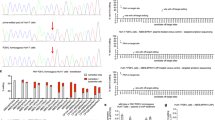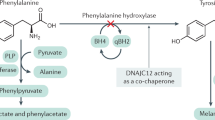Abstract
Extract: Excretion in urine of o-hydroxyphenylacetic acid (o-OH-PAA) was measured quantitatively during a 24-hr period in 43 children ranging from 2 weeks to 12 years of age who were affected by different types of hyperphenylalaninemia (20 typical phenylketonuria (PKU) 7 atypical PKU, and 16 mild forms according to the classification of Auerbach et al.); 28 out of the 33 cases diagnosed at birth in the course of a screening program were examined before reaching 3 months of age. Phenylpyruvic acid (PPA) excretion was estimated at the same time semiquantitatively.
It was found (1) that ferric chloride tests were negative constantly and the daily excretion of o-OH-PAA was always inferior to 5 μM/24 hr in the younger group when the level of phenylalanine in plasma was below 1.5 μmol/ml; (2) that o-OH-PAA excretion increased significantly as the children got older: 11.0 ± 3.8 before 3 months, 16.1 ± 15.9 at 6 months, 75.0 ± 48.5 at 1 year, and 122.1 ± 84.7 μM/24 hr at 2 years of age for levels of phenylalanine in plasma which ranged from 1.5 to 2.1 μmol/ml; (3) that the excretion thresholds for 0-OH-PAA and PPA reached adult values (0.4–0.5 and 0.7–0.9 μmol/ml, respectively) only after 2 years.
In 16 cases, using intravenous perfusion of 0.06 M L-phenylalanine, we have shown also that the PPA and o-OH-PAA excretion was identical whatever the type of (PKU) or mild forms) insofar as the levels of phenylalanine in plasma reached (1.5–3.0 μmol/ml) were equal in both types.
Speculation: This paper presents observations which demonstrate that only a minute amount of o-OH-PAA is excreted daily in the urine of both classic PKU and other forms of hyperphenylalaninemia during the first months of life. It is suggested that this very low excretion is caused by a delayed maturation of phenylalanine transaminase; it is further proposed that the different types of hyperphenylalaninemia, with the exception of those caused by a deficiency of the tyrosine-oxidizing system, are all secondary to mutations affecting the phenylalanine hydroxylase system.
Similar content being viewed by others
Log in or create a free account to read this content
Gain free access to this article, as well as selected content from this journal and more on nature.com
or
Author information
Authors and Affiliations
Rights and permissions
About this article
Cite this article
Rey, F., Pellié, C., Sivy, M. et al. Influence of Age on ortho-Hydroxyphenylacetic Acid Excretion in Phenylketonuria and Its Genetic Variants. Pediatr Res 8, 540–545 (1974). https://doi.org/10.1203/00006450-197405000-00002
Issue date:
DOI: https://doi.org/10.1203/00006450-197405000-00002
Keywords
This article is cited by
-
A synopsis of the unconjugated acidic transamination metabolites of phenylalanine in phenylketonuria
Journal of Inherited Metabolic Disease (1992)
-
Examination of urine metabolites in the newborn period and during protein loading tests at 6 months of age—part 1
European Journal of Pediatrics (1990)
-
Absence of a significant renal threshold for two aromatic acids in phenylketonuric children over two years of age
European Journal of Pediatrics (1980)
-
Phenylalaninmetaboliten im Urin von Patienten mit persistierender Hyperphenylalaninaemie
Klinische Wochenschrift (1976)



